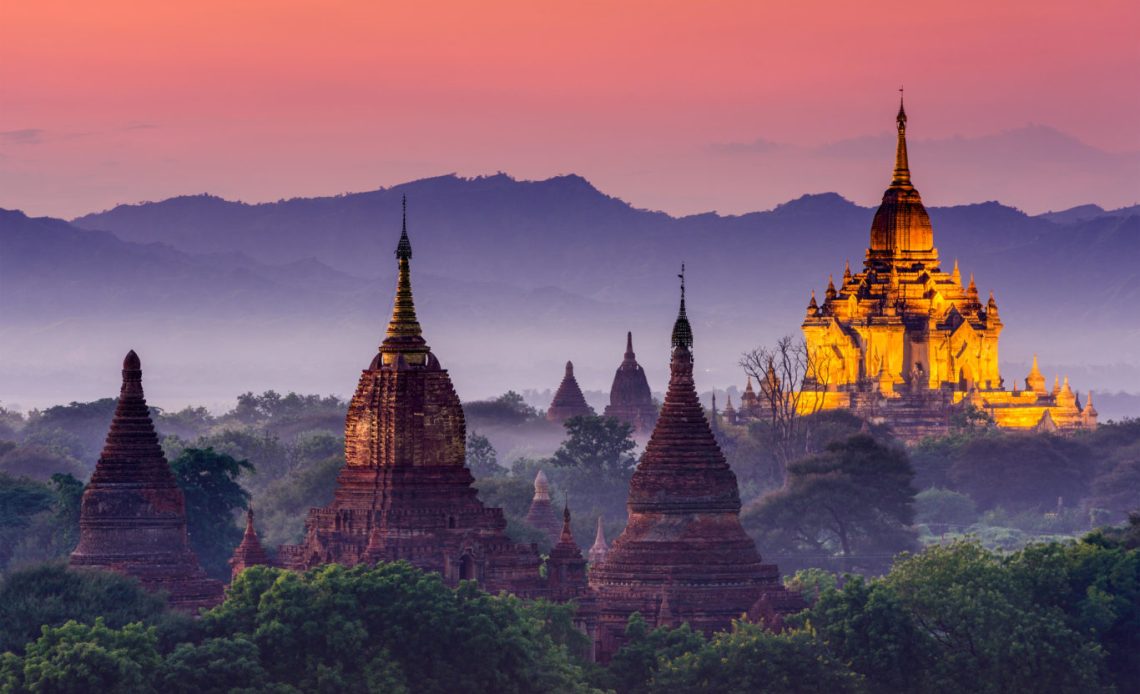Exploring Southeast Asia’s temples offers a journey into spiritual and architectural grandeur. From Cambodia’s Angkor Wat, a symbol of Khmer excellence, to Indonesia’s Borobudur, the world’s largest Buddhist temple, each site narrates a unique cultural tale. Myanmar’s Bagan captivates with thousands of ancient pagodas, while Thailand’s Ayutthaya and Laos’ Luang Prabang reveal rich historical legacies through their ruins and rituals. These temples, beyond their religious significance, are masterpieces of design and craftsmanship, reflecting the region’s diverse cultural tapestry. They stand as testaments to human creativity, offering visitors a profound blend of art, history and spirituality.
The Architectural Marvels of Angkor Wat, Cambodia
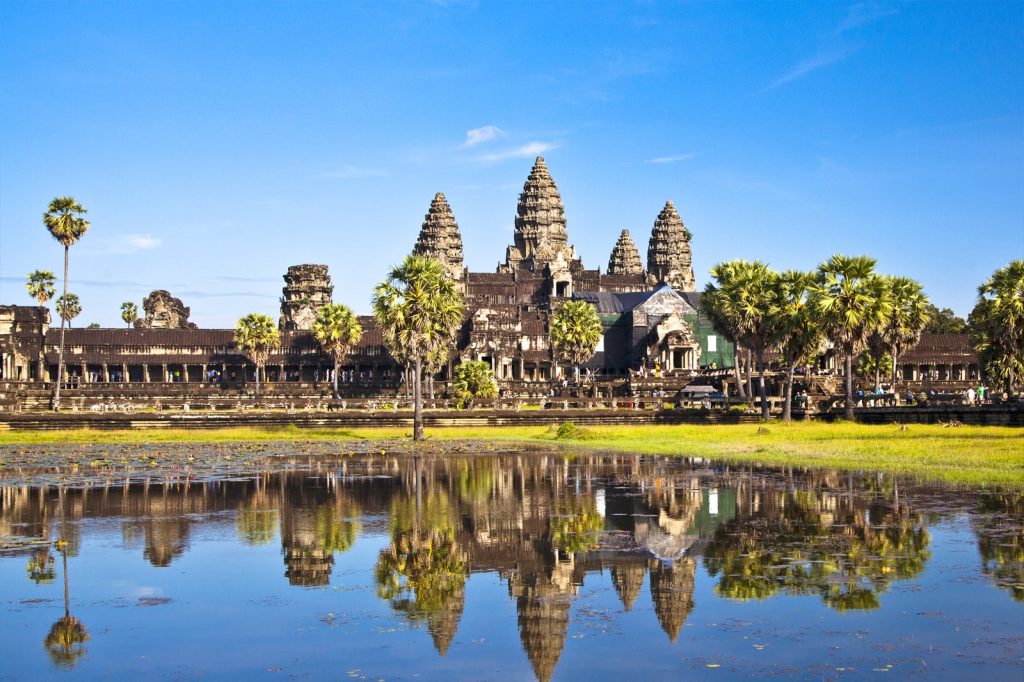
Angkor Wat, a symbol of Cambodia’s historic grandeur, stands as an architectural wonder of the ancient world. Built in the 12th century, this iconic temple complex represents the zenith of Khmer artistry and engineering. Renowned for it’s intricate bas-reliefs, towering spires and majestic central towers, Angkor Wat harmoniously blends spiritual symbolism with architectural innovation. Originally dedicated to the Hindu god Vishnu, it later transformed into a Buddhist site, embodying a seamless religious transition. Surrounded by a vast moat, the temple mirrors a microcosm of the Hindu universe, attracting millions of admirers worldwide for it’s breathtaking beauty and enduring cultural significance.
The Spiritual Oasis of Borobudur, Indonesia
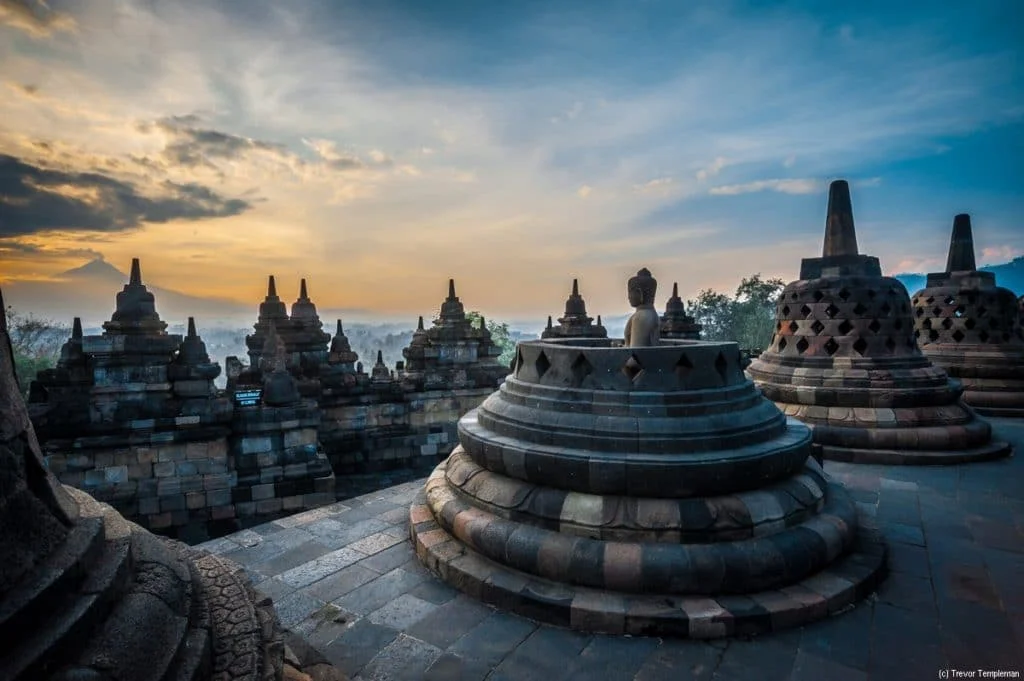
Borobudur in Indonesia, the world’s largest Buddhist temple, is a spiritual oasis reflecting profound philosophical depth. Constructed in the 9th century, this stunning monument in Java epitomizes Buddhist principles through it’s stepped, pyramid-like structure comprising six square and three circular platforms. Adorned with 2,672 relief panels and hundreds of Buddha statues, each element of Borobudur symbolizes stages of enlightenment. The journey to it’s summit represents the path from the worldly realm to Nirvana. Encircled by lush greenery and volcanic hills, Borobudur isn’t just an archaeological marvel; it’s a serene pilgrimage site, resonating with teachings of impermanence and spiritual awakening.
The Enchanting Temples of Bagan, Myanmar

Bagan, in Myanmar, is an enchanting landscape dotted with over 2,000 temples, pagodas and stupas, representing an extraordinary array of ancient Buddhist art and architecture. Dating from the 9th to the 13th centuries, these structures form one of the world’s greatest archaeological sites. The temples, with their intricate carvings, mural paintings and ornate statues, showcase the artistic and religious zeal of the Pagan Kingdom. As the sun rises or sets, casting golden hues over the Irrawaddy River, the view of silhouetted temples against the vibrant sky creates a mesmerizing, almost mystical experience, capturing the essence of spiritual and historical Myanmar.
The Historic Sanctuaries of Ayutthaya, Thailand
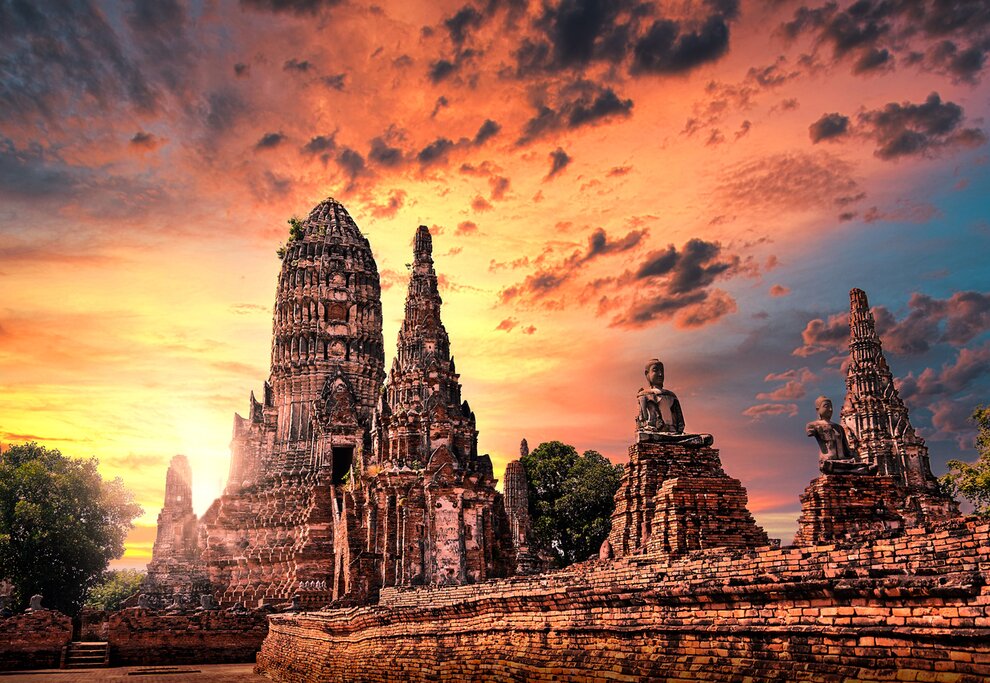
Ayutthaya, Thailand, once a flourishing Siamese capital, now hosts historic sanctuaries amidst it’s ruins, echoing tales of it’s past glory. Designated a UNESCO World Heritage site, Ayutthaya’s temple ruins, such as Wat Mahathat with it’s iconic Buddha head entwined in tree roots, symbolize the city’s resilience. The grandeur of Wat Chaiwatthanaram, reflecting in the Chao Phraya River, showcases exquisite architectural designs of the 17th century. These sanctuaries, combining elements of Khmer and early Sukhothai styles, represent a golden age of Thai civilization, offering a poignant glimpse into the complex history and cultural heritage of this ancient kingdom.
The Cultural Tapestry of Luang Prabang, Laos
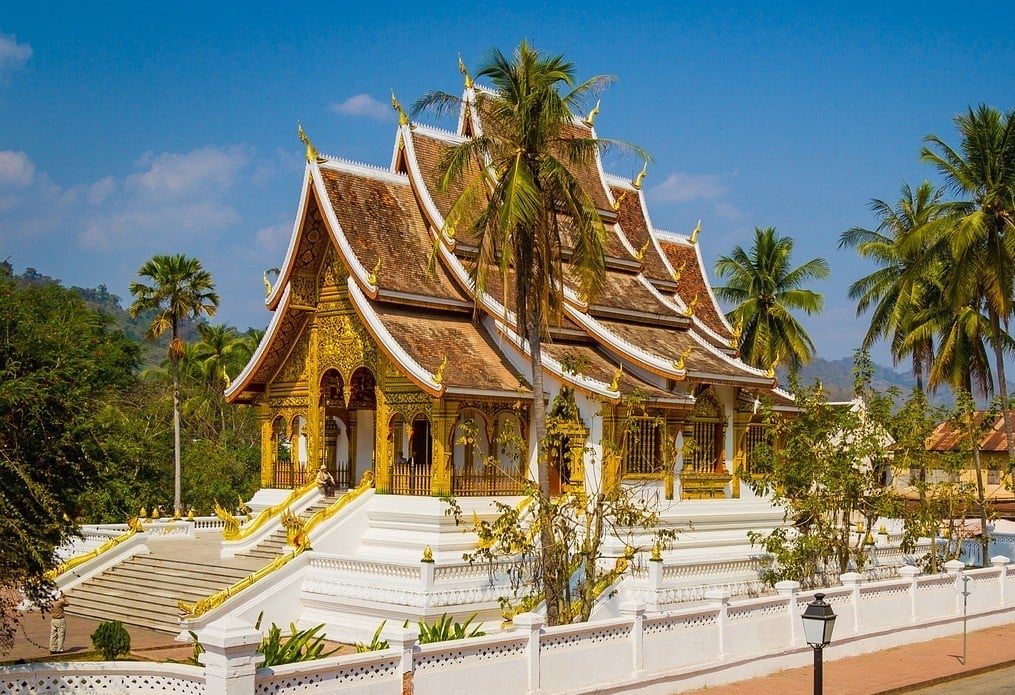
Luang Prabang, a UNESCO World Heritage town nestled in the mountainous region of Laos, is a mosaic of cultural and architectural splendor. Revered for it’s well-preserved amalgamation of traditional Lao wooden houses and European colonial structures, it reflects a unique historical confluence. The town’s spiritual essence is captured in it’s numerous Buddhist temples, like the ornate Wat Xieng Thong, where monks’ chants resonate at dawn. Each temple, adorned with intricate carvings and gold leaf stenciling, narrates stories of religious and artistic traditions. Luang Prabang’s cultural tapestry extends to it’s vibrant night markets and the sacred alms-giving ceremony, where monks in saffron robes gracefully accept offerings at sunrise, an enduring tradition deeply rooted in local life. The town’s natural beauty, with the Mekong River flowing alongside, adds to it’s serene atmosphere. Luang Prabang is not just a travel destination; it’s a living museum, showcasing a harmonious blend of nature, spirituality and cultural heritage.
The Timeless Charm of Hanoi’s Temples, Vietnam
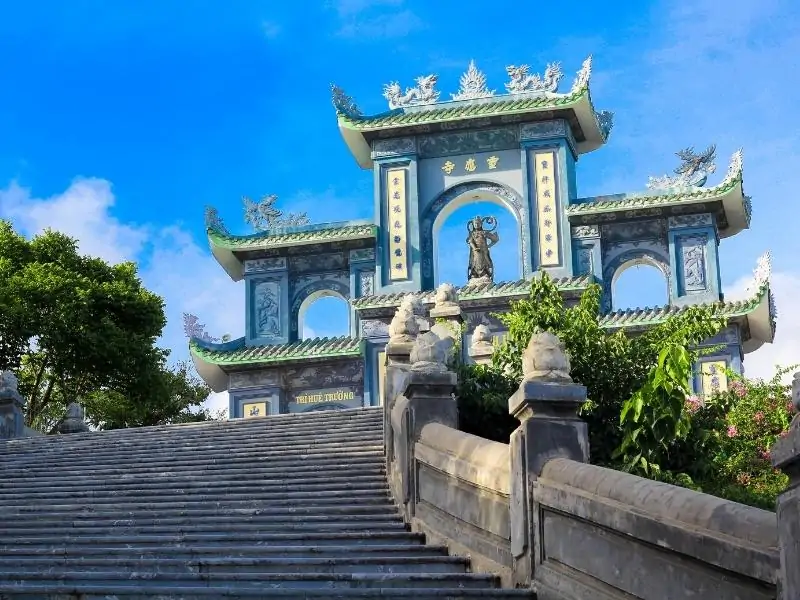
Hanoi, the heart of Vietnam, exudes a timeless charm through it’s historic temples. Which stand as serene sanctuaries amidst the city’s vibrant hustle. The Temple of Literature, originally a university dedicated to Confucius, is a prime example. It’s tranquil courtyards and well-preserved architecture offer a journey back to the 11th century, celebrating Vietnam’s scholarly traditions. Another jewel is the Tran Quoc Pagoda, perched on the West Lake, radiating peace with it’s classic Vietnamese Buddhist design and picturesque surroundings. These temples, steeped in history, are not merely religious sites but are woven into the fabric of local life, hosting vibrant festivals and rituals that reflect the city’s spiritual and cultural identity. Hanoi’s temples, with their distinctive blend of Chinese, French and Southeast Asian influences, invite visitors to immerse themselves in a world where ancient traditions gracefully coexist with modern rhythms, making them a must-visit for anyone seeking to experience the soul of Vietnam.
Balinese Temples
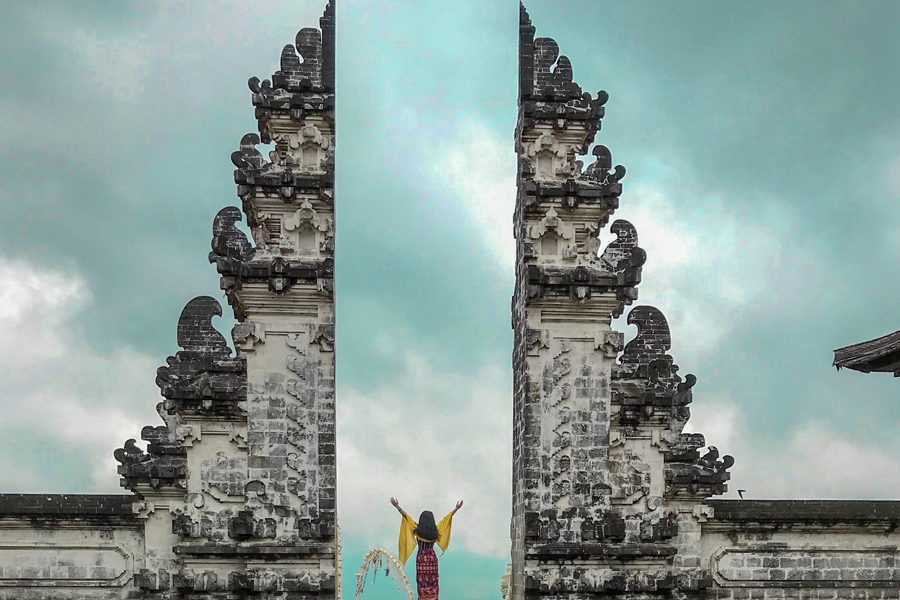
Bali, Indonesia’s island of the gods, is renowned for it’s Balinese temples, the spiritual heartbeat of the island. These sacred sites, known as ‘Puras’, are more than mere structures; they are a profound expression of the island’s unique Hindu culture. The sea temple Tanah Lot, perched on a rocky outcrop and the cliffside Uluwatu Temple, offer breathtaking views and spiritual tranquility. Each temple, set against the island’s lush landscapes, hosts traditional ceremonies and rituals, resonating with the sound of gamelan music. These temples are not just places of worship but are integral to Balinese life, embodying a harmonious balance between humanity, nature and the divine.
The Mystique of Mỹ Sơn, Vietnam
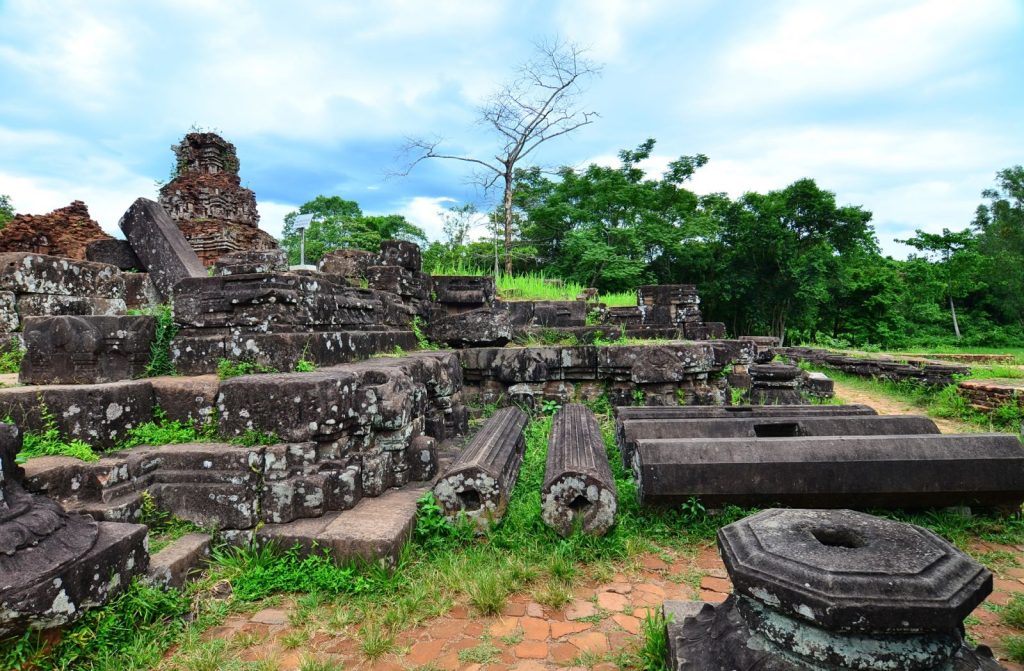
Mỹ Sơn, nestled in the lush valleys of central Vietnam, is a mystique-filled archaeological site, revealing the spiritual and architectural legacy of the ancient Champa Kingdom. Dating from the 4th to the 13th centuries, these Hindu temples are remarkable for their unique brick construction and intricate sandstone bas-reliefs depicting Hindu deities and legends. Despite war damages, Mỹ Sơn retains a haunting beauty, with it’s ruins standing solemnly amidst verdant forests. This UNESCO World Heritage site offers a glimpse into the Cham civilization’s artistry and devotion, making it a captivating destination for those intrigued by history, religion and the enduring mysteries of past cultures.
Experience the Living Temples of Kathmandu, Nepal
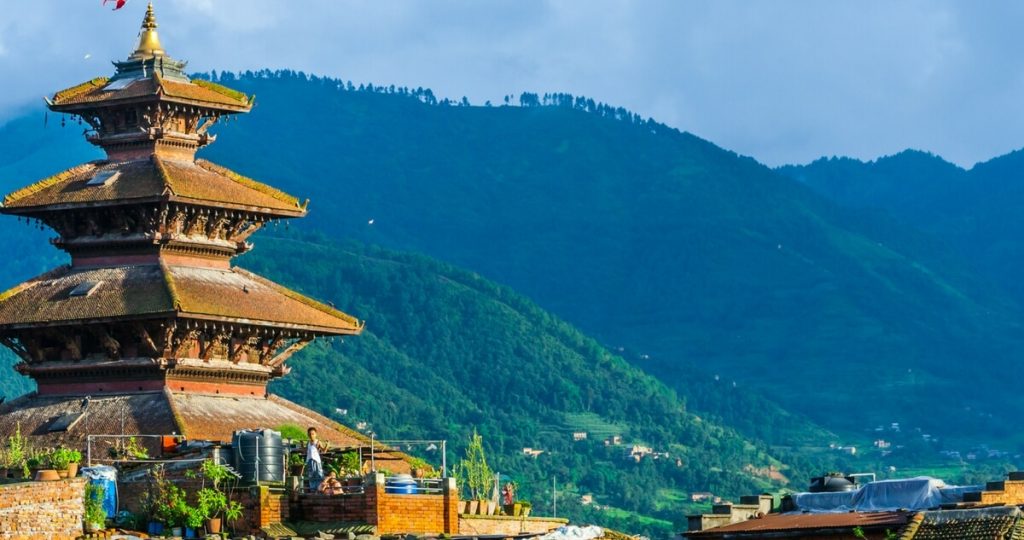
In Kathmandu, Nepal, temples are not just historical monuments; they are vibrant, living entities deeply embedded in the daily life of the locals. The city, set in the Kathmandu Valley, is dotted with sacred sites like the majestic Pashupatinath Temple and the serene Swayambhunath Stupa, each resonating with centuries of spiritual practices. These temples, alongside the bustling Boudhanath Stupa, are focal points of Nepalese Buddhism and Hinduism, hosting an array of colorful rituals and festivals. Their intricate architecture and lively surroundings reflect a rich cultural and religious tapestry, offering visitors an immersive experience into the heart of Nepalese tradition and belief.
Connecting with Local Traditions
Connecting with local traditions is a gateway to the heart of a culture. Immersing oneself in the everyday rituals and customs, from participating in community festivals to sampling traditional cuisine, offers an authentic glimpse into the local way of life. Engaging with artisans in their craft, conversing with elders about folklore or simply observing the rhythm of daily life adds depth to any travel experience. This engagement not only enriches understanding but also fosters a deeper respect for the diversity and richness of cultural practices. By embracing these traditions, travelers weave personal connections that turn ordinary journeys into meaningful, transformative experiences.
Sustainable and Responsible Tourism
| Aspect | Description |
|---|---|
| Environmental Preservation | Minimizing tourism’s impact on natural resources and ecosystems. Encouraging activities and practices that protect and respect the natural environment. |
| Cultural Respect | Understanding and honoring local cultures and traditions. Avoiding actions that might be disrespectful or harmful to local communities and their heritage. |
| Economic Responsibility | Supporting the local economy by patronizing locally-owned businesses, services and products. Ensuring that tourism benefits the host community financially. |
| Community Engagement | Interacting with local communities in a way that is respectful and enriching for both tourists and locals. Participating in community-led tourism initiatives. |
| Conservation of Resources | Using resources such as water and energy efficiently. Opting for accommodations and services that are committed to reducing their ecological footprint. |
| Waste Reduction | Reducing waste generation and promoting recycling and proper disposal of waste. Avoiding single-use plastics and other non-biodegradable materials. |
| Sustainable Transportation | Choosing modes of transport that minimize carbon emissions. Encouraging walking, cycling and the use of public transport where feasible. |
| Awareness and Education | Educating tourists about the importance of sustainable practices and how they can contribute positively during their travels. |
| Wildlife Protection | Avoiding activities that exploit or harm animals. Supporting conservation efforts and respecting wildlife habitats and natural areas. |
| Fair Employment Practices | Supporting businesses that provide fair wages and good working conditions to their employees, particularly in the tourism and hospitality sectors. |
Practical Tips for Temple Visits
- Dress Modestly: Wear clothing that covers shoulders and knees as a sign of respect.
- Remove Shoes: Take off your shoes before entering temple premises, as is customary in many cultures.
- Observe Silence: Maintain a quiet demeanor to respect the sanctity of the temple and it’s worshippers.
- No Touching of Sacred Objects: Avoid touching statues, altars or religious artifacts.
- Photography Etiquette: Always ask permission before taking photos and respect areas where photography is prohibited.
- Follow Local Customs: Observe and adhere to local traditions and practices, which may vary from temple to temple.
- Respectful Behavior: Avoid inappropriate behavior such as loud talking, laughing or eating within the temple.
- Donations: If you wish to make a donation, do so in the designated areas or boxes.
- Guided Tours: Consider taking a guided tour to gain deeper insights into the temple’s history and significance.
- Environmental Care: Keep the temple premises clean; do not litter or damage the site.
- Interaction with Monks: Approach monks with respect and be aware of cultural norms, such as not touching a monk in certain traditions.
- Cultural Sensitivity: Be mindful and respectful of religious sentiments and practices.
- Health and Safety: Stay hydrated, especially in hot climates and be mindful of your physical limits while exploring.
Conclusion
The temples of Southeast Asia are not only architectural marvels but also repositories of rich cultural and spiritual heritage. Visiting these sacred sites offers a unique opportunity to immerse oneself in the history, art and religious traditions of the region. As travelers, respecting local customs, practicing sustainable tourism and engaging with communities enhances the experience, making it more meaningful and rewarding. These temples are more than tourist destinations; they are vibrant centers of life and spirituality, inviting us to explore, learn and connect with the deeper aspects of human civilization and our own inner journeys.
Read More
Tips for Hiking and Camping: The Splendor of the Great Outdoors
Europe’s Best Hotels: Your Gateway to Luxury and Convenience

